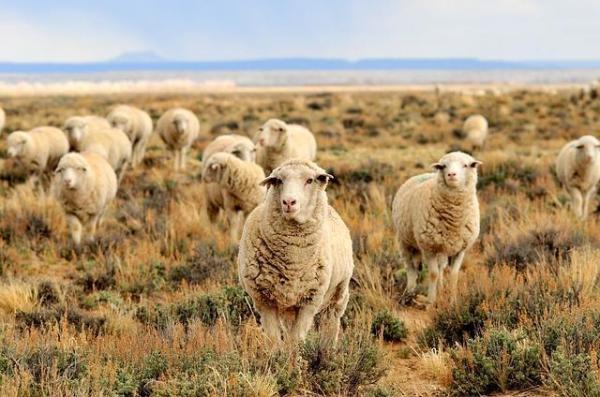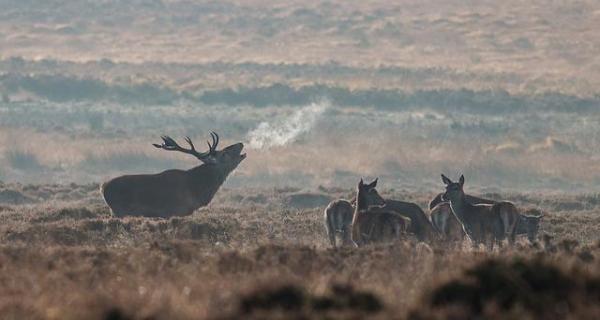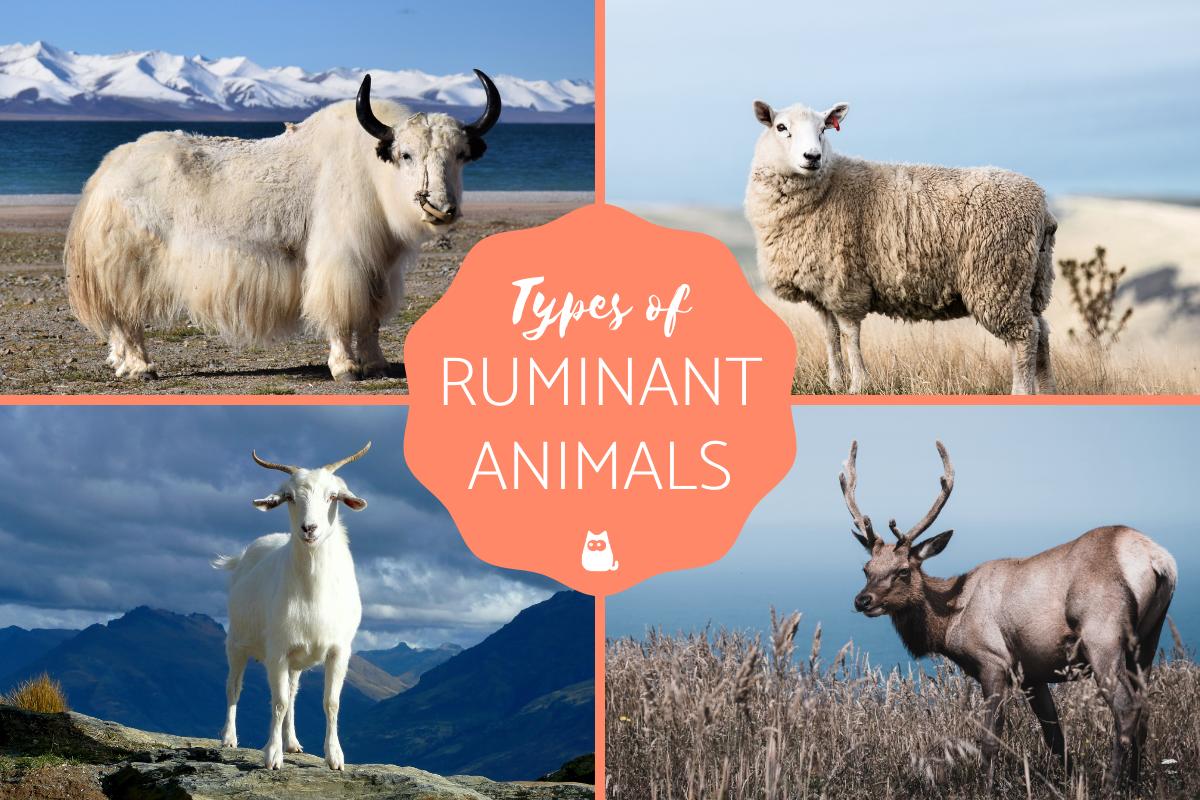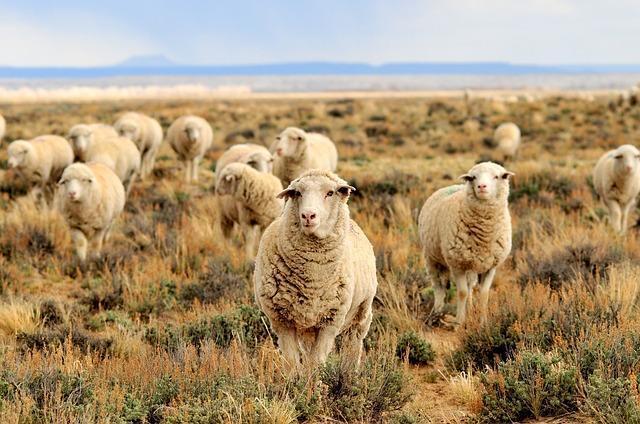Animals That Are Ruminants


Ruminant animals are animals of the suborder Ruminantia which are defined by their ability to ferment their food thanks to specially adapted compartmentalized stomachs. They chew a cud to help with digestion with their food being further broken down by microbial agents in their stomachs. They also have other similarities such as the fact they all have hooves for locomotor function. Some examples of these animals are yak, sheep, goats and deer, although there are many more types of ruminants in nature.
In this AnimalWised article we're going to talk about animals that are ruminants. In addition to providing a full list of examples, we understand their characteristics and learn some fun facts about how ruminants are represented in the anima kingdom.
What are ruminant animals?
The animals that are considered ruminants are polygastric, meaning their stomach is divided into compartments. Some of the compartments have microorganisms that ferment the cellulose in the vegetables they eat into cud, which is easier to digest. Consequently, ruminant animals are also exclusively types of herbivorous mammals. It is a misconception that ruminants have four separate stomachs. Instead, they have one compartmentalized stomach.
Ruminant animals are characterized by their method of digesting food in two phases. Like all animals, they start their digestion after eating food. However, before the digestive process is complete ruminant animals regurgitate their food to chew it again and add saliva.
All animals that are ruminants are also artiodactyls, more commonly known as even-toed ungulates. They all have up to five toes in total, but they only put their weight on two of them. This is why they are ‘even-toed’. Some may only have vestigial toes, while others may have all five. As a fun fact, it appears that whales are considered even-toed ungulates, even though they now have flippers. These evolved from terrestrial animals with hooves. However, whales are not types of ruminant animals.
Since ruminants chew the cud to help break down cellulose in their food and better aid fermentation, their teeth are also specially adapted. This includes a specialized dental formula, as well as the shape of the teeth. Rather than having sharp canines for tearing meat like types of carnivorous animals, ruminants have flattened teeth which chew and grind. Some even have hypsodont teeth which continuously grow, but are worn down by chewing.
There are four large groups of ruminants. We will list them and give you some examples so that you can fully understand what ruminants are and know one when you see it.
How many stomachs do ruminant animals have?
As we have stated before, it is a misconception that ruminants have four stomachs. They have one stomach, but it is compartmentalized into four sections or chambers. These help break down the food which enters from their mouth and then exists into the intestines for further digestion. These chambers allow the partially digested food to be passed back and forth for fermentation.
The four chambers of a ruminant stomach are:
- Rumen: contains microorganisms which start the food fermentation. As the food ferments, some parts are absorbed by the walls and enter the bloodstream directly. It is the largest part of the ruminant stomach.
- Reticulum: the main function of this part of a ruminant stomach is transporting it back to the animal's mouth for further mastication.
- Omasum: contains many folds which allows it to absorb excess water. This means the food is very concentrated when the food passes through and the enzymes are not depleted.
- Abomasum: similar to the one stomach of other animals, it contains a high level of acids which break down the already fermented food. Pepsin is also produced to break down proteins.
After the abomasum, the food enters the intestines for final stages of digestion. You can learn more about this process with our article asking how many stomachs does a cow have?
Types of ruminant animals
The different types of ruminant animals that exist can be divided into the following families:
- Antilocapridae: native to North America. Although similar in appearance to antelope, they are related to giraffes.
- Giraffidae: giraffes and okapis.
- Cervidae: a rather varied group that includes, moose, reindeer or caribou, white-tailed deer, muntjac, red deer and roe deer, among others.
- Bovidae: includes domesticated animals such as cattle, buffalo, bison, antelope and goats.
- Moschidae: here we find species known as musk deer.
1. Bovines and Cattle
Most animals that are ruminants belong to the family of bovids known as Bovidae. Within that group we find the subfamily of bovines or Bovinae, which includes cattle.
These are probably the best known ruminant animals. As you will see below, some animals names are followed by the † symbol, which means they are extinct. Below is a list of some bovine animals:
- Anoa (Bubalus depressicornis)
- Auroch † (Bos primigenius)
- Banteng (Bos javanicus)
- Bison (Bison bison)
- Bongo (Tragelaphus eurycerus)
- Buffalo (Syncerus caffer)
- Cow, Bull, Ox (Bos taurus)
- Eland (Taurotragus spp.)
- Four-horned antelope (Tetracerus quadricornis)
- Gaur (Bos gaurus)
- Gayal (Bos frontalis)
- Kéwel (Alcelaphus buselaphus)
- Kudu (Tragelaphus strepsiceros)
- Kouprey (Bos sauveli)
- Imbabala (Aepyceros melampus)
- Nildai (Boselaphus tragocamelus)
- Nyala (Tragelaphus angasii)
- Saola (Pseudoryx nghetinhensis)
- Sitatunga (Tragelaphus spekii)
- Tamaraw (Bubalus mindorensis)
- Water buffalo (Bubalus bubalis)
- Wild yak (Bos mutus)
- Wisent (Bison bonasus)
- Yak (Bos grunniens)
- Zebu (Bos indicus)
Camelids are not considered ruminants as they do not have a glandular fore stomach. While they have hooves, specially adapted teeth and other similar features, they are not a type of ruminant due to a different type of stomach. Learn more in our article about the differences between camels and dromedaries.
Water buffalo are a type of bovine which are often confused with other ruminant animal. Learn more with our article on the difference between buffaloes, water buffaloes and bison.

2. Ovines and sheep
Also within the family of the bovids we can find the subfamily Caprinae, often referred to as goat antelopes. Within that subfamily we find the genus Ovis, the ovines or sheep.
The second largest group of ruminants are the ovines, ruminant animals best-known and appreciated for their milk and wool. There are not as many different types as there are in the cattle group but we can still give you a considerable list of ovine animals:
- Argali (Ovis ammon)
- Bighorn sheep (Ovis canadensis)
- Domestic sheep (Ovis aries)
- Mouflon (Ovis orientalis)
- Snow sheep (Ovis nivicola)
- Trinhorn sheep (Ovis tragelaphus)
- Urial (Ovis vignei)
There are many different subspecies of domestic and wild sheep. Most of them are named for their native region and habitat.
Despite being closely related and belonging to the same subfamily, goats and sheep underwent a phylogenetic separation. That happened in the last stage of the Neogene period, which started 23 million years ago and finished only 2.5 million years ago. In geological time, that's only yesterday.
The domestic sheep has been bred to the extent there are many variant breeds of this animal, even if they all belong to the same species. You can learn more with our guide to the different types of sheep breeds.

3. Caprines and goat-antelopes
The third group of ruminant animals we examine is that of the goat-antelope or caprine. The subfamily Caprinae is a cousin to the Bovinae, as they both belong to the Bovidae family. Within this subfamily you can find the ovids, which we separated so as not to mix up goats and sheep.
Some caprine ruminants other than sheep include:
- Alpine ibex (Capra ibex)
- Arabian tahr (Arabitragus jayakari)
- Bharal (Pseudois nayaur)
- Barbary sheep (Ammotragus lervia)
- Chamois (Rupicapra rupicapra)
- Chinese goral (Naemorhedus griseus)
- Chinese serow (Capricornis milneedwardsii)
- Dwarf blue sheep (Pseudois schaeferi)
- Grey goral (Naemorhedus goral)
- Himalayan serow (Capricornis thar)
- Himalayan tahr (Hemitragus jemlahicus)
- Japanese serow (Capricornis crispus)
- Long-tailed goral (Naemorhedus caudatus)
- Markhor (Capra falconeri)
- Mountain goat (Oreamnos americanus)
- Muskox (Ovibos moschatus)
- Nilgiri tahr (Nilgiritragus hylocrius)
- Nubian ibex (Capra nubiana)
- Pyrenean chamois (Rupicapra pyrenaica)
- Reg goral (Naemorhedus swinhoei)
- Red serow (Capricornis rubidus)
- Siberian ibex (Capra sibirica)
- Spanish ibex (Capra pyrenaica)
- Sumatran serow (Capricornis sumatraensis)
- Takin (Budorcas taxicolor)
- Taiwan serow (Capricornis swinhoei)
- Walia ibex (Capra walie)
- West Caucasian tur (Capra caucasica)
- Wild goat (Capra aegagrus) [includes the domestic goat as a subspecies]
Through remastication, ruminants are able to reduce the particle size of their food to ensure that their body can assimilate and digest it. This is aided by their specialized teeth, microbial digestion, compartmentalized stomach and other factors. It is common to see sheep and goats making the common chewing movement side to side to break down the fibrous material which makes up their diet.
Discover more about the different types of goats in our related guide.

4. Deer
To complete our full list of ruminant animals, we will now look at a very beautiful and noble group of ruminants, the deer. Deer is the general name for the members of the family Cervidae, which includes different subspecies and genera, altogether including more than 90 species.
Some examples of deer include:
- American wapiti or elk (Cervus canadensis)
- Barasingha (Rucervus duvaucelii)
- Bawean deer (Axis kuhlii)
- Brocket (Mazama spp.)
- Calamian deer (Axis calamianensis)
- Chital (Axis axis)
- Eld's deer (Rucervus eldii)
- Eurasian elk (Alces alces)
- Fallow deer (Dama dama)
- Hog deer (Axis porcinus)
- Huemul (Hippocamelus bisulcus)
- Maral deer (Cervus maral)
- Marsh deer (Blastocerus dichotomus)
- Mindanao mountain deer (Rusa marianna)
- Mindoro deer (Rusa barandanus)
- Moose (Alces alces)
- Mule deer (Odocoileus hemionus)
- Muntjac (Muntiacus spp.)
- Pampas deer (Ozotoceros bezoarticus)
- Père David's deer (Elaphurus davidianus)
- Philippine sambar (Rusa marianna)
- Prince Alfred's deer (Cervus alfredi)
- Pudú (Pudu spp.)
- Red deer (Cervus elaphus)
- Reindeer or caribou (Rangifer tarandus)
- Roe deer (Capreolus capreolus)
- Rusa deer (Rusa spp.)
- Sambar deer (Rusa unicolor)
- Sika deer (Cervus nippon)
- Swamp deer (Rucervus duvaucelii)
- Taruca (Hippocamelus antisensis)
- Thamin (Rucervus eldii)
- Thorold's deer (Cervus albirostris)
- Tufted deer (Elaphodus cephalophus)
- Water deer (Hydropotes inermis)
- White-tailed deer (Odocoileus virginianus)
The now extinct Irish elk (Megaloceros giganteus) was one of the largest deer that ever existed. These animals could reach more than 2 m (6.9 ft) tall, and their antlers were a stunning 3.65 m (12 ft) wide. It is believed that Irish elk became extinct more than 7,000 years ago, but the reasons why it happened haven't been found yet.
Some people confuse the different types of moose with other deer, thinking they are not part of the same family. However, they are closely related. You can learn more with our article explaining the differences between deer, elk, moose and reindeer.

More examples animals that are ruminants
There are more than 150 species of ruminants in the world, but confusingly enough they don't necessarily include all those in the suborder Ruminantia.
Other ruminants outside those groups include:
- Addax (Addax nasomaculatus)
- Antelope (Antilopinae)
- Beira (Dorcatragus megalotis)
- Blackbuck (Antilope cervicapra)
- Bluebuck (Hippotragus leucophaeus) †
- Bontebok (Damaliscus pygargus)
- Chevrotain (Tragulidae)
- Dibatag (Ammodorcas clarkei)
- Dik-dik (Madoqua spp.)
- Duiker (Cephalophinae)
- Gazelle (Gazella spp.)
- Gerenuk (Litocranius walleri)
- Giraffe (Giraffa camelopardalis)
- Grysbok (Raphicerus spp.)
- Goa (Procapra picticaudata)
- Hartebeest (Alcelaphus spp.)
- Impala (Aepyceros melampus)
- Klipspringer (Oreotragus oreotragus)
- Kob (Kobus kob)
- Lechwe (Kobus leche)
- Musk deer (Moschidae)
- Okapi (Okapia johnstoni)
- Oribi (Ourebia ourebi)
- Oryx (Oryx spp.)
- Pronghorn (Antilocapra americana)
- Puku (Kobus vardonii)
- Reedbuck (Redunca spp.)
- Rhebok (Pelea spp.)
- Saiga (Saiga tatarica)
- Springbok (Antidorcas marsupialis)
- Steenbok (Raphicerus campestris)
- Suni (Neotragus moschatus)
- Topi (Damaliscus lunatus)
- Tsessebe (Damaliscus lunatus)
- Waterbuck (Kobus ellipsiprymnus)
- Wildebeest (Connochaetes spp.)
- Zeren (Damaliscus dorcas)
Now you have a full list of the animals that are ruminants, you may think there are some animals we have left out. You can discover if this is the case with our article on whether horses are considered ruminant animals.

If you want to read similar articles to Animals That Are Ruminants, we recommend you visit our Facts about the animal kingdom category.











